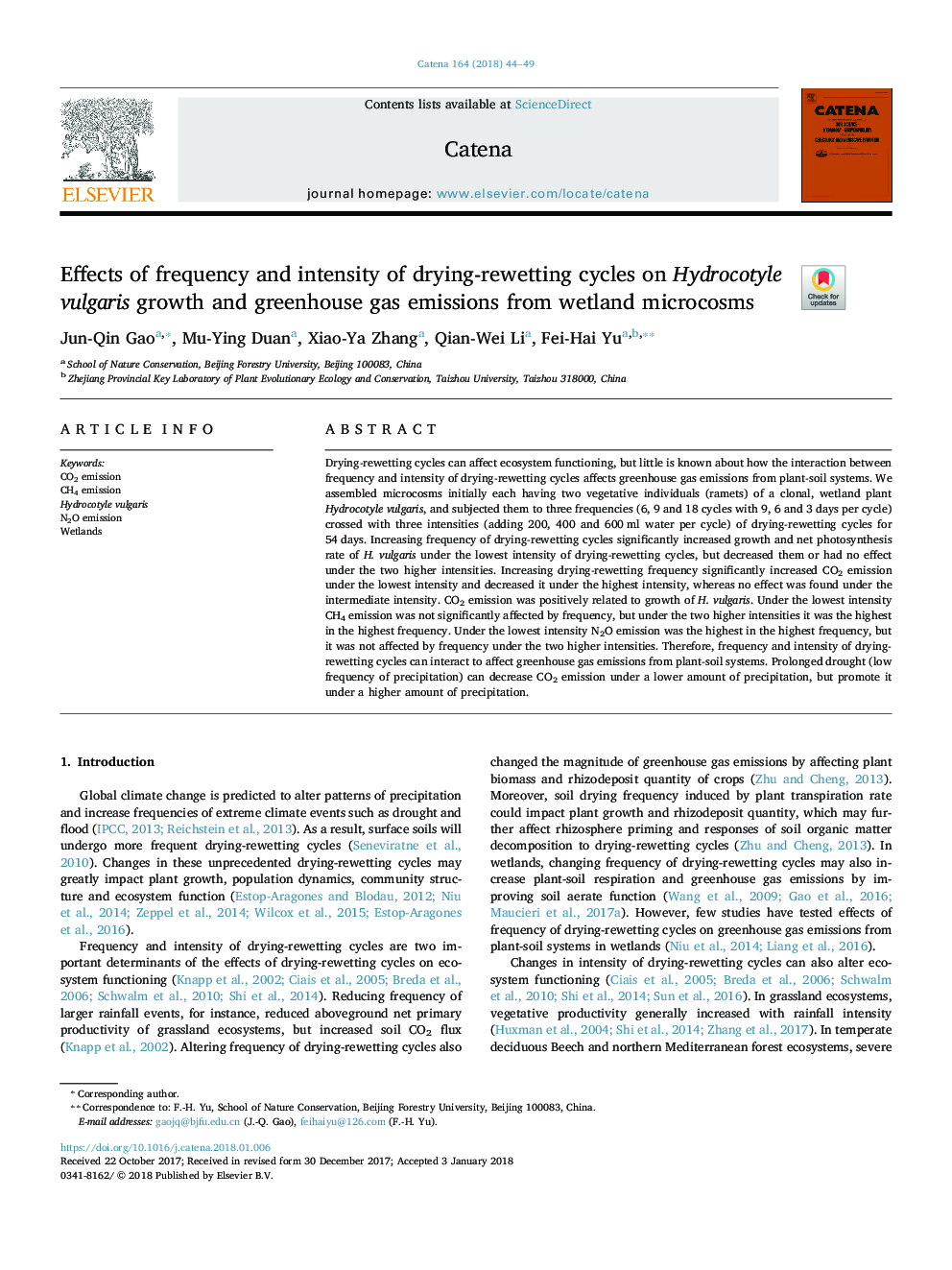| کد مقاله | کد نشریه | سال انتشار | مقاله انگلیسی | نسخه تمام متن |
|---|---|---|---|---|
| 8893652 | 1629190 | 2018 | 6 صفحه PDF | دانلود رایگان |
عنوان انگلیسی مقاله ISI
Effects of frequency and intensity of drying-rewetting cycles on Hydrocotyle vulgaris growth and greenhouse gas emissions from wetland microcosms
ترجمه فارسی عنوان
تأثیر فرکانس و شدت دوره های خشک شدن و بازخوانی بر رشد و رشد هیدروکوتایل ولگاریس و انتشار گازهای گلخانه ای از میکروکوس های
دانلود مقاله + سفارش ترجمه
دانلود مقاله ISI انگلیسی
رایگان برای ایرانیان
کلمات کلیدی
موضوعات مرتبط
مهندسی و علوم پایه
علوم زمین و سیارات
فرآیندهای سطح زمین
چکیده انگلیسی
Drying-rewetting cycles can affect ecosystem functioning, but little is known about how the interaction between frequency and intensity of drying-rewetting cycles affects greenhouse gas emissions from plant-soil systems. We assembled microcosms initially each having two vegetative individuals (ramets) of a clonal, wetland plant Hydrocotyle vulgaris, and subjected them to three frequencies (6, 9 and 18Â cycles with 9, 6 and 3Â days per cycle) crossed with three intensities (adding 200, 400 and 600Â ml water per cycle) of drying-rewetting cycles for 54Â days. Increasing frequency of drying-rewetting cycles significantly increased growth and net photosynthesis rate of H. vulgaris under the lowest intensity of drying-rewetting cycles, but decreased them or had no effect under the two higher intensities. Increasing drying-rewetting frequency significantly increased CO2 emission under the lowest intensity and decreased it under the highest intensity, whereas no effect was found under the intermediate intensity. CO2 emission was positively related to growth of H. vulgaris. Under the lowest intensity CH4 emission was not significantly affected by frequency, but under the two higher intensities it was the highest in the highest frequency. Under the lowest intensity N2O emission was the highest in the highest frequency, but it was not affected by frequency under the two higher intensities. Therefore, frequency and intensity of drying-rewetting cycles can interact to affect greenhouse gas emissions from plant-soil systems. Prolonged drought (low frequency of precipitation) can decrease CO2 emission under a lower amount of precipitation, but promote it under a higher amount of precipitation.
ناشر
Database: Elsevier - ScienceDirect (ساینس دایرکت)
Journal: CATENA - Volume 164, May 2018, Pages 44-49
Journal: CATENA - Volume 164, May 2018, Pages 44-49
نویسندگان
Jun-Qin Gao, Mu-Ying Duan, Xiao-Ya Zhang, Qian-Wei Li, Fei-Hai Yu,
